A pile foundation with a monolithic grillage is well suited for building a house on moving ground. The vertical supports in it are united by a tape that makes the base more reliable.
Characteristics and application of a pile foundation with a monolithic grillage
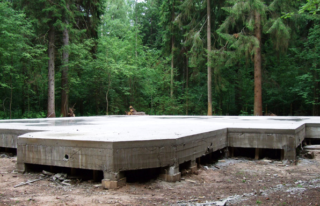
This is one of the most common types of foundations in low-rise private construction. As with a conventional columnar base, the load from the building in this case presses on the vertical supports. These can be driven or screw piles. The latter are especially recommended for unstable soils, wetlands or clayey areas. The grillage helps to redistribute the load created by the supporting structures.
Unlike single column foundations, this foundation is well suited for all kinds of problem soils. These include soils with high-lying waters, high humidity or mobility, areas with permafrost. Monolithic piles can be installed in areas where other types of foundation (for example, strip) would be overloaded. They are also suitable for reliable, stable soil. However, there are still some limitations: for sedimentary, rocky and igneous soils, as well as those areas where there is a rocky or limestone layer, this foundation is not recommended.
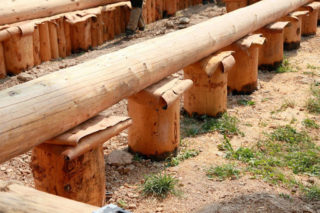
Piles can be made from different materials:
- Wooden supports are installed under light buildings. It is supposed to drive them in with a vibrating hammer. The most common piles are pine, but they can also be made from other conifers.
- Reinforced concrete supports can have a circular or rectangular section. They withstand well the load imposed by the building. Supports are hollow and full-bodied.
- Metal screw piles are suitable for different types of soil, including for construction in permafrost areas.
Supports also differ in their behavior in the ground. In some of them, the load transfer is realized through the lateral side. Other piles pass through the moving layer into the depth of the soil and transfer the load to the solid part of the soil, resting on it.
The construction estimate depends on the type of piles, the dimensions of the base and the grillage device. The necessary calculations must be done in advance.
Varieties of grillages
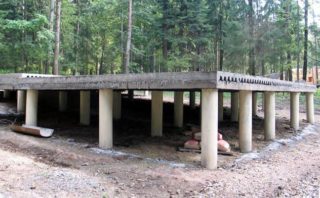
They make a grillage from metal or concrete beams. Its function is to bind the vertical components of the foundation above the ground. The distance from the soil level to the grillage can be different. Usually the piles are evenly spaced under the structure. In some cases, in places of reinforcement, the supports are mounted in crowded "beams".
Tall
In this case, the base plane is significantly higher than the earth's surface. Due to the ease of installation work, such a grillage is used very often. Another advantage is that it is not subject to soil pressure. But to make a basement in a building with this grillage will not work. In addition, during its installation, it is necessary to provide high-quality waterproofing and insulation.
Terrestrial
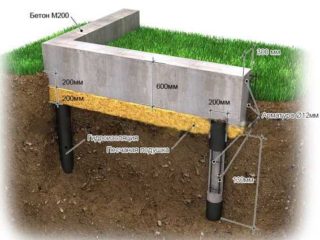
Here the plane is flush with the ground.Cases where she only slightly rises above him also fall into this group.
Recessed
In this case, the upper plane of the structure is located below the soil surface. This is the most time-consuming type of grillage to implement, due to the complexity of creating a free gap under it.
DIY erection technology
Installation and reinforcement of a pile foundation with a monolithic grillage can be done without even having a lot of experience in construction work. In advance, you need to study the required GOSTs, prepare drawings that describe how the structure should look in section. The number of piles involved depends on the mass of the building and the load generated by the slabs.
Sequence of work:
- With the help of a hand drill, wells of the required depth are created, in which the piles will be located. Since the tool has an adjustable shaft length, it can be operated at different immersion levels (up to 5 m).
- Roofing pipes are made with a diameter similar to that of the wells. They will serve as formwork. The length of the pipes should be 0.3 m longer than the depth of the wells. The tops are made of three-layer material and are tied with wire pieces.
- The resulting pipes are mounted in drilled holes. If there is a little water at the bottom of the latter, this can be ignored, but if it is more than 0.25 of the height, the liquid is pumped out by a pump before installing the formwork.
- The frame is being prepared from the reinforcement. It is easiest to make it from three rods with a cross section of 0.7 cm, fastened with a wire tie. Frame structures are installed in wells.
- A concrete solution is prepared using a mixer and it is poured into the formwork in portions. Each layer is rammed with a vibrator.
- They begin to install the grillage. A trench is dug between the piles of such a width that formwork can be installed there. The minimum depth is 0.3 m. In no case should the concrete mix be poured into the trench without a formwork frame.
- At the bottom, 0.1 m of sand is poured and the surface is lined with roofing felt waterproofing. Formwork is mounted between the pillars.
- The reinforcement is installed above the surface boundary by 3 cm.
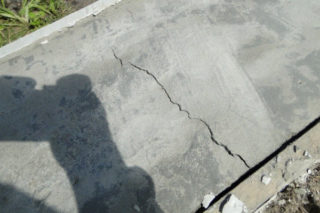
The surface of the poured mixture should be slightly moistened from time to time. Starting from the next day for a week, it is poured every day with water. So the composition is gaining strength better. After 3 weeks, the formwork can be dismantled. At the same time, the sand cushion under the grillage tape is removed. The result is a bridge-like structure between the supports. An air gap is left in case the soil expands in winter.
If metal screw piles were chosen instead of reinforced concrete piles, installation work will be even easier. The supports are screwed into the ground to the depth indicated in the design drawings. The screw parts must be below the frost mark. You need to start twisting the piles from the corners of the building. It is important to ensure that they are located strictly vertically.
The installed supports are cut with a grinder to one level. To prevent corrosion processes, a reinforced concrete mixture is poured into the cavity of the piles. Then the heads are welded and the grillage is mounted. For easy construction, it can be made of well-finished timber. For a more massive building, a metal grillage or reinforced concrete tape is suitable.
Pros and cons of pile foundations with a monolithic grillage
This base option is good because it is used on most types of soils, including frozen and mobile ones. The structure is easy and quick to assemble and has excellent load-bearing qualities. You can arrange its arrangement even in the cold season.
The disadvantages of the design are the impossibility of arranging the insulated basement and the need for special tools for installation. If screw piles are used, they cannot be tested for damage.








